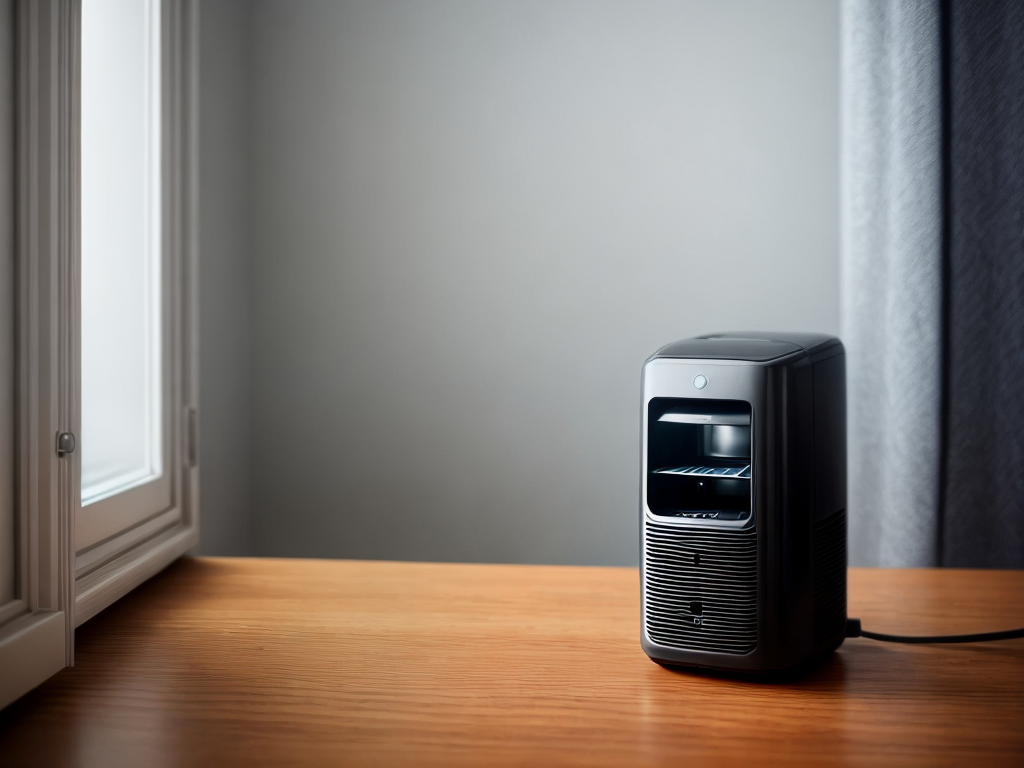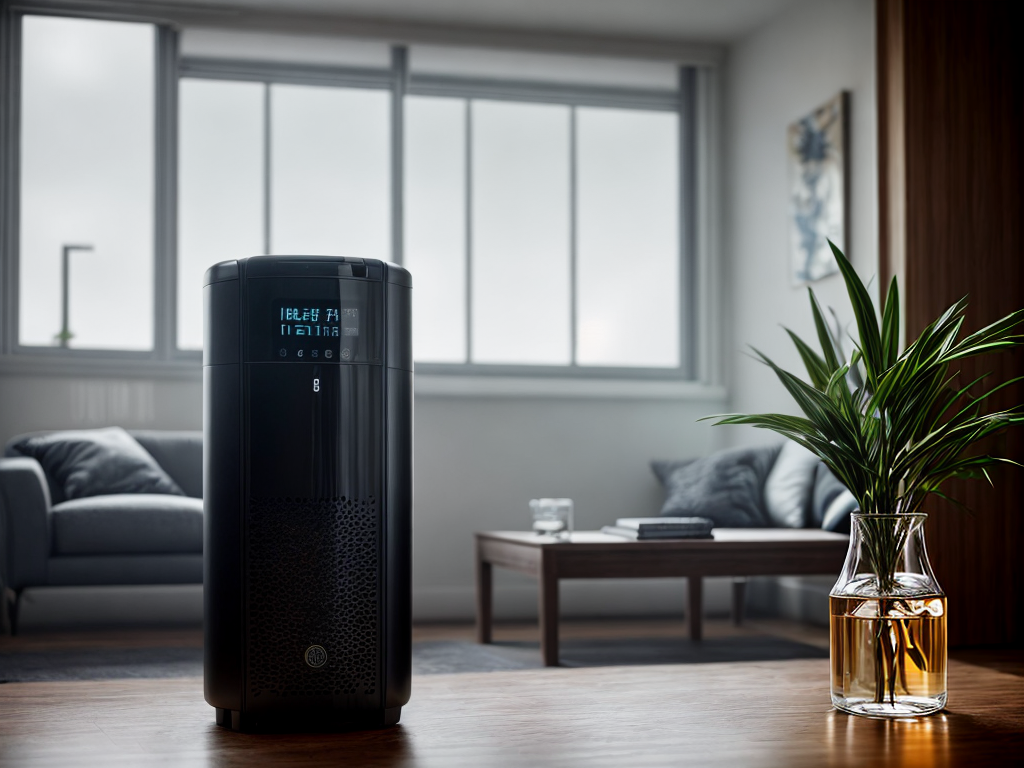
Did you know that approximately 50% of American households use dehumidifiers to combat excess moisture? It’s a common problem that many of us face, especially in humid climates or during the summer months. But what happens when your trusty dehumidifier starts acting up? From power issues to strange odors, there are a variety of problems that can arise. In this discussion, we’ll explore some of the most common dehumidifier problems and provide troubleshooting tips to help you get your unit back up and running smoothly. So, if you’ve ever wondered why your dehumidifier isn’t working as it should, keep reading to uncover the solutions that could save you time, money, and frustration.
No Power or Unresponsive Controls
If your dehumidifier is not powering on or if the controls are unresponsive, there are a few troubleshooting steps you can take to try and fix the issue. First, check if the power cord is securely plugged into the outlet. Sometimes, it can become loose and prevent the dehumidifier from turning on. If the power cord is securely connected, check if the outlet is working by plugging in another electronic device. If the outlet is not supplying power, try plugging the dehumidifier into a different outlet.
Another common issue is a tripped circuit breaker or blown fuse. Locate the circuit breaker panel or fuse box in your home and check if any of the breakers are in the “off” position or if a fuse is blown. Reset the breaker or replace the fuse if necessary.
If the dehumidifier still does not power on or if the controls remain unresponsive, there may be a problem with the control panel. Inspect the control panel for any visible damage or loose connections. If everything appears to be in order, try resetting the control panel by unplugging the dehumidifier for a few minutes and then plugging it back in.
If these troubleshooting steps do not resolve the issue, it is recommended to contact a professional technician for further assistance with troubleshooting power issues or control panel problems.
Excessive Noise or Vibrations
I hate it when my dehumidifier starts making loud rattling noises or vibrating excessively. It can be really annoying and disrupt the peace and quiet in my home. But thankfully, there are a few common reasons why this might be happening, and troubleshooting them can help resolve the issue.
Loud Rattling Noises
Loud rattling noises indicate excessive noise or vibrations coming from the dehumidifier. If you’re experiencing this issue, it’s important to identify the causes and troubleshoot them promptly. There are several potential reasons for the rattling noise. Firstly, check if the dehumidifier is placed on an uneven surface. If it is, simply leveling it can solve the problem. Another cause could be loose internal components, such as the fan or motor. In this case, tightening the screws or bolts should eliminate the rattling noise. Additionally, a clogged or dirty fan blade might also result in excessive vibrations. Cleaning or replacing the fan blade can resolve this issue. By addressing these common causes and troubleshooting the rattling noise, you can regain control over your dehumidifier’s sound output.
Excessive Motor Vibrations
Are excessive motor vibrations causing excessive noise or vibrations in your dehumidifier? If so, there are a few motor maintenance and balancing techniques you can try to resolve this issue. Here’s what you can do:
- Check for loose screws or bolts in the motor assembly. Tighten them securely to ensure the motor is properly secured.
- Inspect the fan blades for any signs of damage or imbalance. If you notice any issues, replace the blades to restore balance.
- Use a level to ensure that your dehumidifier is placed on a flat surface. Uneven surfaces can contribute to motor vibrations.
Inadequate Moisture Removal
Is your dehumidifier not effectively removing moisture from the air? If you’re experiencing inadequate moisture removal, it’s crucial to identify the underlying issues and take control of the situation. Maintaining optimal humidity levels is essential for preventing condensation and creating a comfortable environment. To help you troubleshoot this problem, I’ve created a table below that highlights common causes and their solutions:
| Common Causes | Solutions |
|---|---|
| Inadequate capacity | Upgrade to a higher-capacity dehumidifier. |
| Incorrect placement | Ensure the dehumidifier is placed in the right location. |
| Dirty air filter | Clean or replace the air filter. |
| High room temperature | Lower the room temperature to enhance moisture removal. |
Water Leakage or Overflow
Water leakage or overflow is a common issue with dehumidifiers that can cause damage to floors and furniture. To prevent overflow, it is important to regularly check and empty the water collection bucket. Additionally, ensuring that the dehumidifier is properly leveled and that the drain hose is not blocked can help prevent water leakage.
Causes of Water Leakage
During operation, excess water may leak or overflow from the dehumidifier due to various reasons. To prevent this issue and maintain control over your dehumidifier, consider the following potential solutions and maintenance tips:
- Ensure the water collection bucket is properly positioned and securely in place, as a loose or misaligned bucket can lead to leakage.
- Regularly clean and inspect the drain hose for any clogs or blockages that may cause water to back up and overflow.
- Check the air filter regularly and clean or replace it as needed, as a dirty or obstructed filter can cause the dehumidifier to work harder and produce more condensation.
How to Prevent Overflow
To prevent overflow and maintain optimal performance, it is crucial to take proactive measures when using your dehumidifier. Regular cleaning and maintenance are essential to prevent water leakage or overflow. Here are some maintenance tips to keep your dehumidifier in top condition.
First, make sure to clean the filter regularly. A clogged filter can restrict airflow, causing the dehumidifier to work harder and potentially leading to overflow. Remove the filter and gently clean it with water or a vacuum cleaner.
Next, check the drain hose for any blockages. If the hose is clogged, water can back up and overflow. Clear any debris or buildup from the hose to ensure proper drainage.
Lastly, keep an eye on the water collection bucket. Empty it regularly, especially when it’s close to full. Overfilling the bucket can lead to water overflow and damage to the dehumidifier.
Ice Buildup on Coils
Ice buildup on coils can be a common issue with dehumidifiers. It is important to address this problem promptly to prevent further damage and ensure optimal performance. Here are some steps to troubleshoot and prevent ice formation on your dehumidifier coils:
-
Check the temperature: Ensure that the room temperature is above 65°F (18°C). Lower temperatures can cause condensation and ice formation on the coils. Adjust the thermostat or move the dehumidifier to a warmer location if necessary.
-
Inspect the air filter: A dirty or clogged air filter can restrict airflow, leading to reduced heat exchange and ice buildup. Regularly clean or replace the air filter to maintain proper airflow and prevent ice formation.
-
Monitor the humidity level: Set the dehumidifier to the appropriate humidity level for your space. If the humidity level is too low, it can cause the coils to become too cold, resulting in ice formation. Adjust the settings accordingly to maintain a balanced humidity level.
Unpleasant Odors
After addressing the issue of ice buildup on the dehumidifier coils, the next concern to tackle is the presence of unpleasant odors. As someone who desires control over the environment in my home, I understand how important it is to eliminate these odors and prevent them from returning.
To begin with, it is crucial to clean the dehumidifier regularly to eliminate any odors that may have accumulated over time. Start by unplugging the unit and carefully removing the water collection bucket. Empty any water and rinse the bucket with warm, soapy water. Wipe the interior of the dehumidifier with a cloth dampened with a mixture of water and vinegar to neutralize any odors.
Additionally, consider using odor-absorbing products, such as activated charcoal or baking soda, in the vicinity of the dehumidifier. These products can help absorb any lingering odors and keep the air fresh.
To prevent odors from returning, make sure to maintain a clean and dry environment around the dehumidifier. Regularly empty the water collection bucket and ensure that there are no leaks or standing water nearby. Keep the area well-ventilated to promote airflow and prevent the growth of mold or mildew, which can contribute to unpleasant odors.
Unit Not Turning Off or Cycling Properly
I’ve encountered another issue with my dehumidifier – it’s not turning off or cycling properly. This can be quite frustrating, especially when you’re trying to maintain the desired humidity level in your home. But fear not, there are steps you can take to troubleshoot and resolve this problem.
To begin troubleshooting the electrical issues, you should first check the power source. Make sure the dehumidifier is properly plugged into a functioning outlet. If the power cord is damaged, it may need to be replaced. Additionally, inspect the circuit breaker to ensure it hasn’t been tripped.
Next, let’s focus on troubleshooting the cycling problems. Here are three possible causes and solutions to consider:
- Check the humidity settings: Ensure that the humidity level is set to a level that you desire. If it is set too low, the dehumidifier may not cycle on and off properly.
- Clean or replace the air filter: A dirty or clogged filter can impede airflow and cause the dehumidifier to run continuously. Clean or replace the filter according to the manufacturer’s instructions.
- Test the humidity sensor: The sensor may be faulty and not accurately detecting the humidity level. Consult the user manual to locate the sensor and test its functionality.








